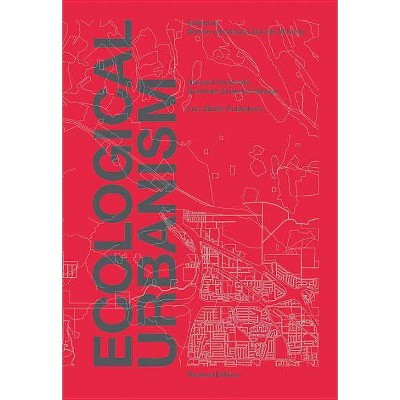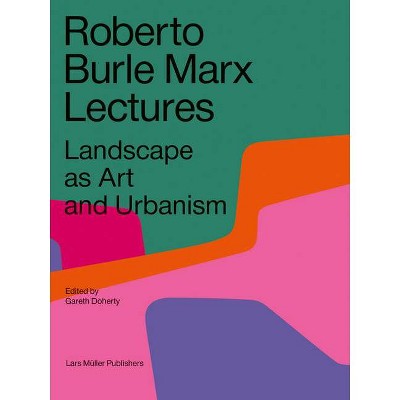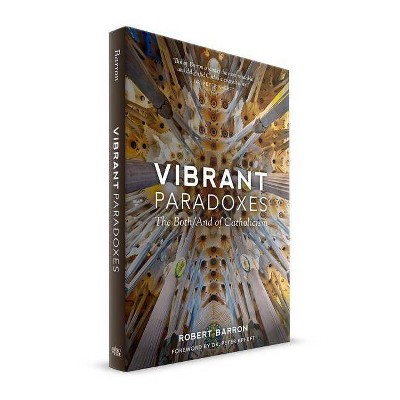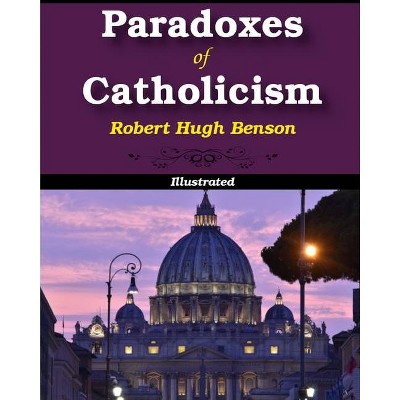Paradoxes of Green - by Gareth Doherty (Paperback)
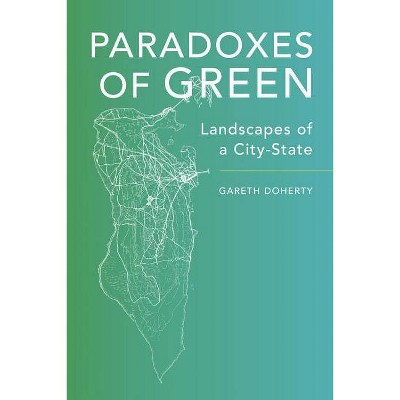
Similar Products
Products of same category from the store
AllProduct info
<p/><br></br><p><b> About the Book </b></p></br></br>"This highly innovative book is a multidisciplinary study of green and its significance from multiple perspectives: aesthetic, architectural, environmental, political, and social. It is centered on the Kingdom of Bahrain, the smallest and greenest of the Arab states in the Persian Gulf, where green has a long and deep history appearing cooling, productive, and prosperous--and a radical contrast to the hot, hostile desert. As is the case with cities around the world, green is often celebrated as a counter to gray urban environments, yet green has not always been good for cities. To have the color green manifested in arid environments is often in direct conflict with 'green' from an environmental point of view; this paradox is at the heart of the book. Given the resources required to maintain green in arid areas, including cities, the provision of green often bears significant environmental costs. In arid environments such as Bahrain, this contradiction becomes extreme and even unsustainable. Based on long-term ethnographic fieldwork, Gareth Doherty explores the landscapes of Bahrain where green represents a plethora of implicit human values and lives in dialectical tension with other culturally and environmentally significant colors and hues. The book's six chapters focus on: Blue, Red, Date-palm Green, Grass Green, Beige, and White. Implicit in his book is the argument that concepts of color and object are mutually defining and thus a discussion about green becomes a discussion about the creation of space and place"--<p/><br></br><p><b> Book Synopsis </b></p></br></br><p>This innovative multidisciplinary study considers the concept of green from multiple perspectives--aesthetic, architectural, environmental, political, and social--in the Kingdom of Bahrain, where green has a long and deep history of appearing cooling, productive, and prosperous--a radical contrast to the hot and hostile desert. Although green is often celebrated in cities as a counter to gray urban environments, green has not always been good for cities. Similarly, manifestation of the color green in arid urban environments is often in direct conflict with the practice of green from an environmental point of view. This paradox is at the heart of the book. In arid environments such as Bahrain, the contradiction becomes extreme and even unsustainable.<br /><br /> Based on long-term ethnographic fieldwork, Gareth Doherty explores the landscapes of Bahrain, where green represents a plethora of implicit human values and exists in dialectical tension with other culturally and environmentally significant colors and hues. Explicit in his book is the argument that concepts of color and object are mutually defining and thus a discussion about green becomes a discussion about the creation of space and place.</p><p/><br></br><p><b> From the Back Cover </b></p></br></br>"The dazzling achievement of <i>Paradoxes of Green</i> is its eloquent and clear negotiation of the tricky problem of color from two points of view: on high, at the level of theory, and on the ground, where his personal observations give this important book such vitality. Gareth Doherty's multidisciplinary range is breathtaking--essential to any consideration of color and its impact--and his deep knowledge of the region is impressive. This is an invaluable contribution to the understanding of an immensely challenging topic."--Charles A. Riley II, Professor of English, Baruch College, City University of New York, and author of <i>Color Codes</i> <p/> "An utterly original, keenly observed ethnography, a thick description of the color green in the complex urban setting of Manama, Bahrain, by a landscape architect who walks its streets with only a camera, notebook, and water-coloring kit in hand. We absorb some insightful lessons about colors and their objects, not to mention the surprising roles of color--symbolic and practical--in urban design. Most profoundly for anthropologists, he demonstrates the importance of design to our understanding of urbanism and its materialities, and does so in delightful prose, laced with a sly sense of humor that is as engaging as it is trenchant. Brilliantly conceived at the intersection of architecture, urban design, anthropology, and Middle East studies, this is a truly interdisciplinary work, guaranteed to interest a wide readership."--Steven C. Caton, Khaled Bin Abdullah Bin Abdulrahman Al Saud Professor of Contemporary Arab Society, Harvard University <p/> "Based on fieldwork in the small and arid Kingdom of Bahrain, Doherty forensically examines and expands what is currently understood by 'green.' Exploring the role human experience plays in framing a complex layering of meaning and significance in landscape and urbanism, Doherty artfully demonstrates how color and landscape are instrumental in shaping social relationships. This deeply profound book is not just for students and practitioners of landscape architecture and design, but for those interested in a radically different kind of ecology."--Kathryn Moore, Professor of Landscape Architecture, Birmingham City University, UK <p/><p/><br></br><p><b> Review Quotes </b></p></br></br><br><i>"Paradoxes of Green</i> is thoughtfully and accessibly written, and the author's self-conscious allusions to the tradition of ethnographic fieldwork in classical anthropology gives the text a narrative dimension that was often found in the early decades of the discipline."-- "City and Society"<br><br>"<i>Paradoxes of Green: Landscapes of a City-State</i> . . . is a successful hybrid of landscape writing and ethnography focused on the island nation of Bahrain. It presents a portrait of Bahrainis' rich and evolving relationship with their landscape as well as a model for future studies."-- "The Dirt, uniting the built & natural environments"<br><br>"Beautifully written." -- "Landscape Architecture Magazine"<br><br>"Despite the colorful history and identity of landscapes - whether the Irish countryside, American agrarian plains, or Persian Gulf deserts - color, and by extension actionable anthropological methods, has been conspicuously absent from recent discourse in the built environment. <i>Paradoxes of Green</i> offers a fresh perspective."-- "Design and Culture"<br><br>"Doherty is as comfortable reflecting on the aesthetic aspects of colour as he is describing the ecological implications of property development. . . the portrait Doherty paints is of a fascinating, quickly changing, and - yes - paradoxical place."-- "Environment and Urbanization"<br><br>"The use of color in this book to build an ethnographic window into the country is enormously compelling, thought provoking and enlightening. A fascinating read and a call for much greater care in assuming greater greening translates to greater urban sustainability."-- "The Nature of Cities"<br><br>"These qualms aside, <i>Paradoxes of Green</i> is a thoughtful contribution to the developing design anthropology literature, highlighting the at-times divergent meanings of a colour, exploring the networks that support it, and demonstrating the capacity for ethnography to provide a layered account of these complexities. Moreover, this book is a unique discussion of Bahraini history and a detailed account of the ways in which literal greening is a troubled substitute for ecologically sensitive development."-- "Human Ecology"<br><br>"This work should be considered a major achievement for its exploration of the diverse landscapes of Bahrain and their continuous production and transformation, presented in an accessible manner which nevertheless does not reduce its challenging complexity."-- "Middle East Journal"<br><br>"With the title of Doherty's book clearly identifying 'green' as its subject, it is no surprise that not just that particular colour - green - but colour generally is a theoretical underpinning of the book and potentially its most novel contribution."-- "Landscape Review"<br><p/><br></br><p><b> About the Author </b></p></br></br><b>Gareth Doherty</b> is Associate Professor of Landscape Architecture and Director of the Master in Landscape Architecture program at the Harvard University Graduate School of Design. Doherty's books include <i>Roberto Burle Marx Lectures: Landscape as Art and Urbanism</i>. He is co-editor of <i>Is Landscape...? Essays on the Identity of Landscape</i> with Charles Waldheim and, with Mohsen Mostafavi, <i>Ecological Urbanism</i>. Doherty is a founding editor of the <i>New Geographies</i> journal and editor-in-chief of <i>New Geographies 3: Urbanisms of Color</i>.
Price History
Price Archive shows prices from various stores, lets you see history and find the cheapest. There is no actual sale on the website. For all support, inquiry and suggestion messages communication@pricearchive.us
